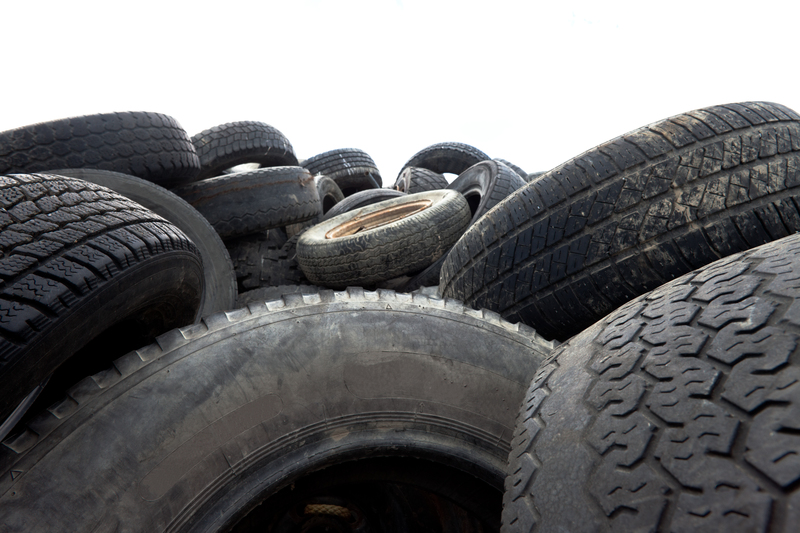Microplastic Pollution: Can We Reverse the Tide?
Introduction: The Rising Tsunami of Microplastic Contamination
Microplastic pollution, a serious and ever-growing environmental crisis, has permeated oceans, rivers, soils, and even the air we breathe. As society advances and plastic production continues at unprecedented rates, microplastics--tiny fragments from decomposing plastic waste--are now present practically everywhere on Earth. This alarming trend in plastic pollution threatens ecosystems, wildlife, and even human health. But a pressing question remains: Can we reverse the tide of microplastic contamination?
This comprehensive article examines the origins, impacts, and current solutions for microplastic pollution, evaluating whether a reversal is truly possible, and exploring innovative approaches to diminish this global environmental hazard.

Understanding Microplastics: What Are They?
The Different Faces of Microplastics
Microplastics are defined as plastic particles less than 5 millimeters in diameter. They are broadly categorized into two types:
- Primary microplastics: Intentionally manufactured tiny plastics, such as microbeads found in cosmetics, cleaning agents, and industrial abrasives.
- Secondary microplastics: Result from the breakdown of larger plastic items due to environmental exposure, including UV radiation, mechanical abrasion, and chemical degradation.
Microplastic Contamination: Sources and Pathways
Microplastic pollution stems from a multitude of sources, as detailed below:
- Textile fibers: Synthetic clothing releases vast quantities of microfibers during washing. These microfibers escape wastewater treatment and enter rivers and oceans.
- Personal care and cosmetic products: Many products, including toothpaste and exfoliating scrubs, contain microbeads as abrasives.
- Plastic packaging and single-use plastics: Bags, bottles, straws, and food wrappers degrade into microplastic particles over time.
- Automotive tires: Tire wear on roads generates tiny plastic particles that are washed into water bodies through stormwater runoff.
- Paint and coatings: Boat hulls, outdoor structures, and road markings often utilize plastic-based paints, which deteriorate and shed microplastics.
Environmental Impact of Microplastic Pollution
Impact on Marine and Terrestrial Ecosystems
Microplastic contamination endangers a vast array of organisms. In marine environments, fish, plankton, whales, and seabirds mistakenly ingest microplastics, which can lead to:
- Physical internal injuries
- Blocked digestive tracts and malnutrition
- Toxic chemical accumulation from both the plastics and the absorbed pollutants on their surfaces
Effects on Human Health
Recent research suggests humans are not immune to the threats posed by microplastic contamination. Microplastics have been detected in tap and bottled water, seafood, and even table salt. Potential effects include:
- Release of hazardous chemicals: Many plastics contain additives, such as phthalates and bisphenol A (BPA), known endocrine disruptors.
- Transmission of pathogens: Microplastics can act as vectors for harmful bacteria and viruses.
- Unknown long-term risks: As research evolves, long-term consequences of chronic microplastic exposure are still being uncovered.
The Global Scale of the Microplastics Crisis
Studies indicate that over 8 million tons of plastic enter the world's oceans every year, with a significant portion eventually fragmenting into microplastics. Researchers have found microplastic pollution in the most remote places--from the Mariana Trench to Arctic ice and Mount Everest.
The magnitude of microplastic accumulation is demonstrated by startling statistics:
- 80% of marine debris consists of plastic, much of it as micro and nano-sized particles.
- 94% of tap water samples in the US were found to contain microplastics (according to an Orb Media study).
- An average human may ingest up to 5 grams of microplastics weekly-- equivalent to the weight of a credit card.
Can We Reverse Microplastic Pollution?
Prevention: The First and Most Effective Line of Defense
Reversing the tide of plastic micro-contamination hinges on minimizing future inputs. Key strategies include:
- Reducing single-use plastics: Governments, industries, and consumers must shift towards reusable materials and eliminate disposable plastics wherever possible.
- Banning or restricting microbeads: Over 60 countries have already introduced regulations; more policies can further limit primary microplastic sources.
- Sustainable product design: Encouraging eco-design--using alternative biodegradable materials--can dramatically decrease plastic shedding.
- Promoting extended producer responsibility (EPR): Making manufacturers accountable for the lifecycle of their products incentivizes innovation and better waste management.
Technological Innovations to Capture and Remove Microplastics
While prevention is vital, existing microplastic pollution must also be addressed. Emerging technologies seek to remove microplastics from:
- Wastewater treatment plants: Advanced filtration, such as membrane bioreactors, electrocoagulation, and granular filters, can trap microplastics before they reach water bodies.
- River and ocean cleanups: Initiatives like The Ocean Cleanup employ floating barriers, rubbish-collecting boats, and innovative filtering devices to intercept plastics at river mouths.
- Stormwater management systems: Filters and catch basins installed in urban drainage systems help capture micro-debris before it enters waterways.
- Novel biotechnological approaches: Genetically engineered microorganisms with a capability to degrade certain plastics are under investigation, albeit large-scale success remains elusive.
Source-Control: Closing the Loop on Microplastic Leakage
Microplastic abatement can be further achieved by addressing often-overlooked sources:
- Textiles: The development of synthetic fabrics with reduced shedding rates, use of washing machine filters, and promoting natural-fiber clothing can all decrease microfiber release.
- Tires: Innovations in tire composition and promoting public transport reduce particle emissions.
- Infrastructure: Updating road markings and using bio-based or weather-resistant paint formulations can lessen microplastic emissions from infrastructure.
The Role of Policy and Consumer Behavior
Legislation and Corporate Responsibility
A
- Stricter regulations: National bans on certain single-use plastics and microplastic ingredients in consumer products are increasing. Expanded regulation can mandate reductions in industrial releases and incentivize alternatives.
- Corporate transparency: Companies that disclose plastic footprints and set ambitious reduction targets foster industry-wide change and consumer trust.
- Circular economy strategies: Extended producer responsibility (EPR), product take-back schemes, and the promotion of closed-loop recycling systems encourage the reuse and repurposing of end-of-life plastics.
Citizen Action: The Power of the Individual
Consumers wield significant power through their everyday choices. Individuals can combat plastic micro-pollution by:
- Choosing products free from microbeads and excessive plastic packaging
- Adopting reusable items--bags, bottles, containers--instead of single-use alternatives
- Supporting local and global cleanup efforts
- Advocating for policy change through activism and community action
- Conscientiously washing synthetic clothing and advocating for appliance companies to adopt filtration solutions
Pioneering Research and Future Solutions
Biodegradable Plastics: Promise and Pitfalls
Innovators are developing biodegradable plastics and alternatives from natural materials like starch, cellulose, and algae. While promising, widespread adoption hinges on ensuring these materials degrade completely in natural environments and do not simply break into microfragments themselves.
Advanced Filtration and Separation Technologies
From nanofiber membranes in water treatment plants to high-tech filters for washing machines, advances in material engineering are crucial for trapping microplastics at the source.
Bio-remediation: Nature's Cleanup Crew
Scientists are exploring the use of bacteria, fungi, and enzymes capable of breaking down plastic polymers. While laboratory-scale tests show potential, there are challenges in scaling up these solutions without unforeseen ecosystem effects.
Obstacles and Continuing Challenges
Despite growing awareness and advances, significant hurdles persist in the fight against microplastic contamination:
- Lack of global standardization: Different countries have varying regulations and policies, impeding coordinated global action.
- Complexity of cleanup: Once plastics fragment into microscopic pieces, collection and removal become technically and economically challenging.
- Insufficient public awareness: While plastic pollution is prominent in the public psyche, microplastic pollution and its risks remain less understood.
- Lingering environmental persistence: Even with complete cessation of new inputs, microplastics would continue to cycle through ecosystems for decades or centuries due to their durability.

Signs of Progress: Turning the Tidal Wave
Though daunting, there are signs that humanity can reverse the spread of microplastic pollution:
- International cooperation: The United Nations and other bodies are negotiating legally binding treaties for plastic waste reduction and prevention.
- Growing innovation: From ocean skimmers to biotechnological breakthroughs, the race for practical solutions accelerates each year.
- Rising public engagement: Citizen-led movements and consumer pressure are persuading companies to ditch microplastics and design sustainable alternatives.
- Education and outreach: Increased research and awareness campaigns are empowering individuals, industries, and governments to act.
Conclusion: Reversing the Tide--A Collective Imperative
The battle against microplastic pollution is far from over. However, it is not unwinnable. By addressing both the causes and symptoms--through prevention, innovation, policy, and personal responsibility--we can begin to stem and even reverse the tide. The path forward demands comprehensive action from
As scientists unravel the mysteries of microplastic impacts and engineers craft ever-better solutions, hope for a cleaner, healthier future grows brighter. Each decision--from the plastics we buy to the laws we support--sets the stage for the next chapter in humanity's relationship with plastic, determining whether future generations inherit oceans teeming with life, not plastic.
Together, we can change course and help restore balance to our planet's delicate ecosystems--before it's too late.